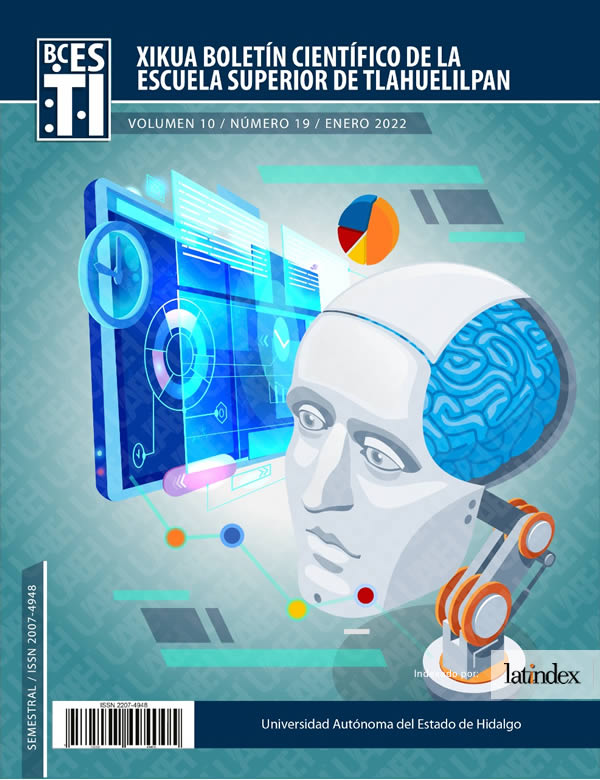Genetic predisposition and risk factors associated with Neuroblastoma
Abstract
Tumors derived from the neural crest such as Neuroblastoma have increased their incidence in the last decade; therefore, currently in Mexico, they represent a great challenge in Pediatric Oncology due to the high mortality rate in newborns who suffer from it, since this tumor is characterized for being the most frequent solid extracranial tumor in childhood and has a low survival rate. The present study is based on updated scientific review sources where the aim is to update and disseminate the main genetic, chemical or environmental risk factors that intervene etiologically in the production of chromosomal instability that could trigger the presence of neuroblastoma to prevent pre conceptional maternal exposure to this type of factors and prevent the number of cases from continuing to increase.
Downloads
References
Ahmed, AA, Zhang, L., Reddivalla, N. y Hetherington, M. (2017). Neuroblastoma en niños: actualización sobre factores pronósticos clínico-patológicos y genéticos. Hematología y oncología pediátricas , 34 (3), 165-185.
Albert, DM, Plum, LA, Yang, W., Marcet, M., Lindstrom, MJ, Clagett-Dame, M. y DeLuca, HF (2005). Capacidad de respuesta de los modelos de retinoblastoma y neuroblastoma humanos a un análogo de vitamina D no calcémico 19-nor. The Journal of Steroid Biochemistry and Molecular Biology , 97 (1-2), 165-172.
Álvarez, AM, Spec, MD y Lamarre, R. (2012). Estado dEl artE: tumor Es dE cr Esta nEural, nEuroblastoma fisiopatología, diagnóstico y tratami Ento . Org.Co. http://www.scielo.org.co/pdf/med/v20n2/v20n2a05.pdf
Aygun, N. (2018). Características biológicas y genéticas del neuroblastoma y su importancia clínica. Revisiones pediátricas actuales , 14 (2), 73–90.
Barrena Delfa, S., Rubio Aparicio, P., y Martínez Martínez, L. (nd). Cir Pediatr. 2018; 31: 57-65 . Secipe.Org. Obtenido el 14 de octubre de 2021 de https://www.secipe.org/coldata/upload/revista/2018_31-2_57-65.pdf
Barrena Delfa, S., Rubio Aparicio, P., y Martínez Martínez, L. (nd). Cir Pediatr. 2018; 31: 57-65 . Secipe.Org. Obtenido el 14 de octubre de 2021 de https://www.secipe.org/coldata/upload/revista/2018_31-2_57-65.pdf
Benet M, S., Garabal G, J. A., Luis H, J., Tacoronte P, L., & Artazkoz T, J. J. (2017). Estesioneuroblastoma o neuroblastoma olfatorio. Revista de Otorrinolaringología y Cirugía de Cabeza y Cuello, 77(1), 63–68.
Colon, N. C., & Chung, D. H. (2011). Neuroblastoma. Advances in Pediatrics, 58(1), 297–311.
Fang, X., Wang, H., Ma, X., Guo, Y., Yang, W., Hu, S., Qiu, Y., Zhao, J., & Ni, X. (2020). Clinical features of children with retinoblastoma and neuroblastoma. Journal of Ophthalmology, 2020, 9315784.
Fati, F., Pulvirenti, R., Paraboschi, I., & Martucciello, G. (2021). Surgical approaches to neuroblastoma: Review of the operative techniques. Children (Basel, Switzerland), 8(6), 446.
Febrero, B., Ríos, A., Rodríguez, J. M., Flores, B., & Parrilla, P. (2015). Retroperitoneal neuroblastoma in the adult. An uncommon entity. Cirugia Espanola, 93(10), e147-8.
Ferrís i Tortajada, J., Ortega García, J. A., García i Castell, J., López Andreu, J. A., Berbel Tornero, O., & Crehuá Gaudiza, E. (2005). Factores de riesgo para el neuroblastoma. Anales de pediatria (Barcelona, Spain: 2003), 63(1), 50–60.
González-Mondragón, A., Valencia-Herrera, A. M., Toledo-Bahena, M., Mena-Cedillos, C., Zamora-Chávez, A., & Ramón-García, G. (2021). Metástasis cutáneas como primera manifestación de neuroblastoma primario de glándula suprarrenal en un paciente pediátrico. Boletin medico del Hospital Infantil de Mexico, 78(5), 479–484.
Kamili, A., Atkinson, C., Trahair, T. N., & Fletcher, J. I. (2020). Mouse models of high-risk neuroblastoma. Cancer Metastasis Reviews, 39(1), 261–274.
Kholodenko, I. V., Kalinovsky, D. V., Doronin, I. I., Deyev, S. M., & Kholodenko, R. V. (2018). Neuroblastoma origin and therapeutic targets for immunotherapy. Journal of Immunology Research, 2018, 1–25.
Knudson, A. G., Jr, & Strong, L. C. (1972). Mutation and cancer: neuroblastoma and pheochromocytoma. The American Journal of Human Genetics, 24(5), 514–532.
Louis, C. U., & Shohet, J. M. (2015). Neuroblastoma: molecular pathogenesis and therapy. Annual Review of Medicine, 66(1), 49–63.
Mallepalli, S., Gupta, M. K., & Vadde, R. (2019). Neuroblastoma: An updated review on biology and treatment. Current Drug Metabolism, 20(13), 1014–1022.
Maris, J. M., & Knudson, A. G. (2015). Revisiting tissue specificity of germline cancer predisposing mutations. Nature Reviews. Cancer, 15(2), 65–66.
Messahel, B., Hing, S., Nash, R., Jeffrey, I., & Pritchard-Jones, K. (2005). Clinical features of molecular pathology of solid tumours in childhood. The Lancet Oncology, 6(6), 421–430.
Navas-Campo, R., Moreno Caballero, L., Gasos Lafuente, A., Tobajas Morlana, P., Séez Valero, E., & Gimeno Peribáñez, M. J. (2020). Neuroblastoma olfatorio. Todo lo que el radiólogo debe saber. Revista Argentina de Radiología / Argentinian Journal of Radiology, 84(01), 017–029.
Steliarova-Foucher, E., Stiller, C., Lacour, B., & Kaatsch, P. (2005). International Classification of Childhood Cancer, third edition. Cancer, 103(7), 1457–1467.
Tolbert, V. P., & Matthay, K. K. (2018). Neuroblastoma: clinical and biological approach to risk stratification and treatment. Cell and Tissue Research, 372(2), 195–209.
Trigg, R. M., Shaw, J. A., & Turner, S. D. (2019). Opportunities and challenges of circulating biomarkers in neuroblastoma. Open Biology, 9(5), 190056.
Tsubota, S., & Kadomatsu, K. (2018). Origin and initiation mechanisms of neuroblastoma. Cell and Tissue Research, 372(2), 211–221.
van Groningen, T., Koster, J., Valentijn, L. J., Zwijnenburg, D. A., Akogul, N., Hasselt, N. E., Broekmans, M., Haneveld, F., Nowakowska, N. E., Bras, J., van Noesel, C. J. M., Jongejan, A., van Kampen, A. H., Koster, L., Baas, F., van Dijk-Kerkhoven, L., Huizer-Smit, M., Lecca, M. C., Chan, A., … Versteeg, R. (2017). Neuroblastoma is composed of two super-enhancer-associated differentiation states. Nature Genetics, 49(8), 1261–1266.
Zhuo, Z.-J., Liu, W., Zhang, J., Zhu, J., Zhang, R., Tang, J., Yang, T., Zou, Y., He, J., & Xia, H. (2018). Functional polymorphisms at ERCC1/XPF genes confer neuroblastoma risk in Chinese children. EBioMedicine, 30, 113–119.









